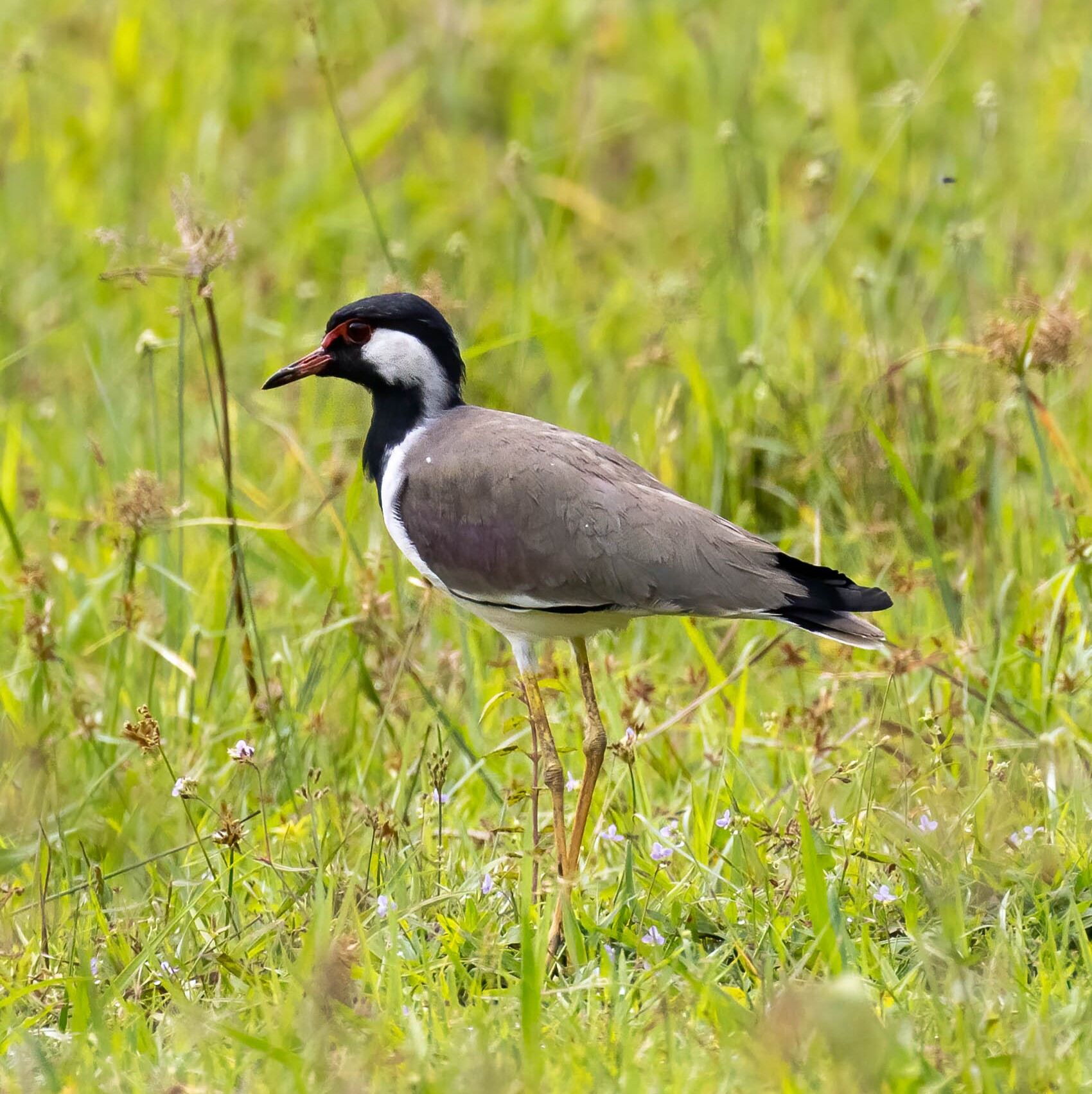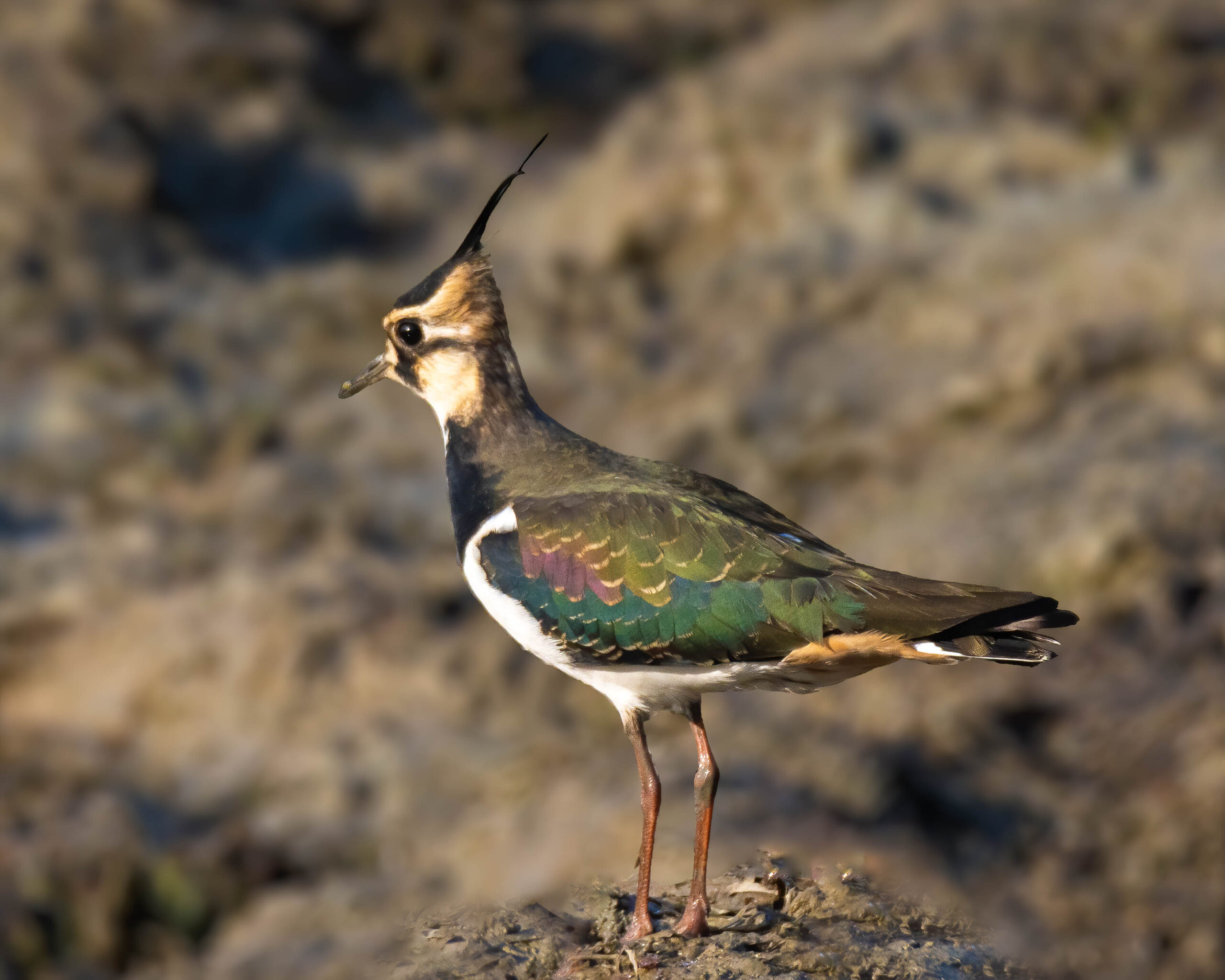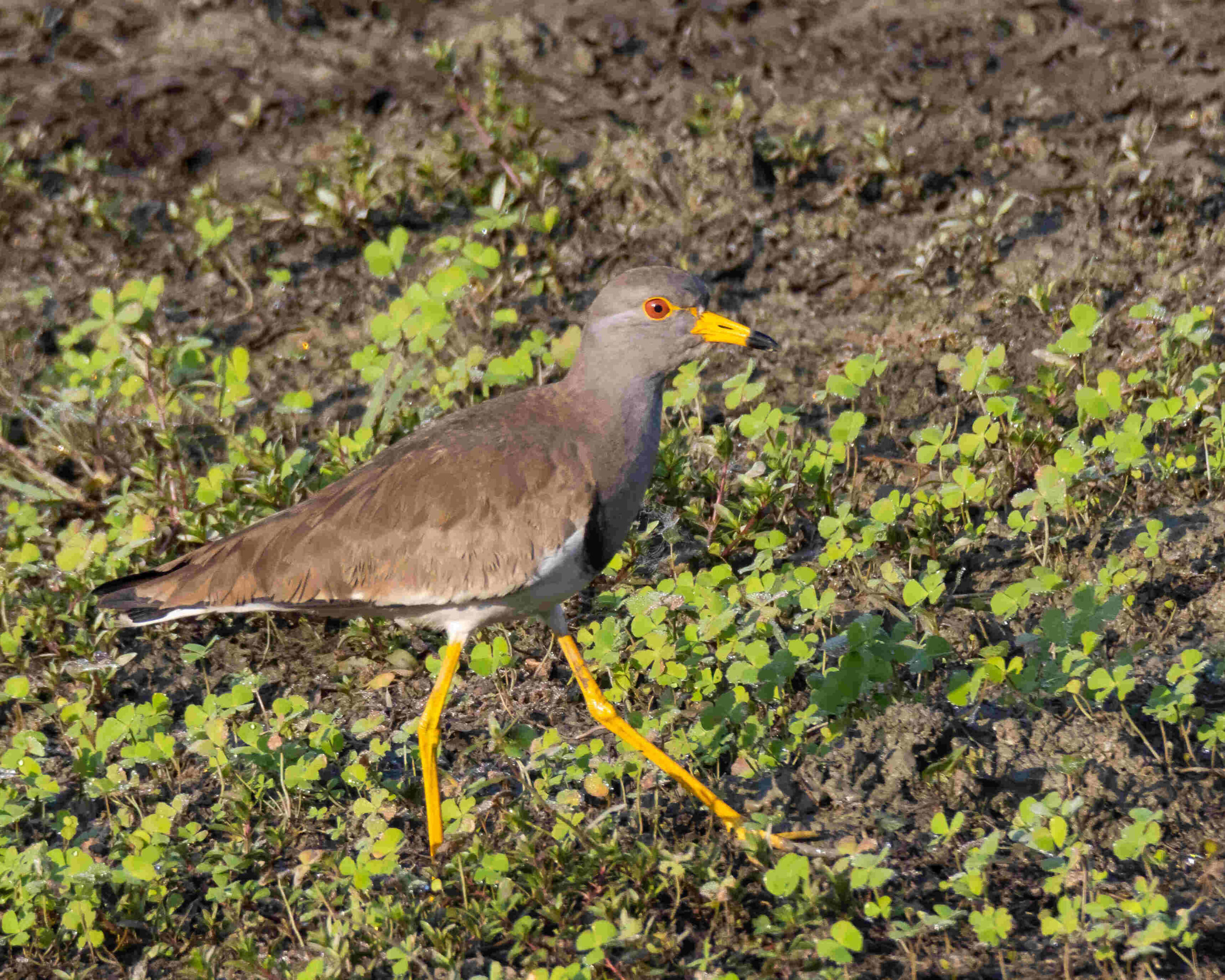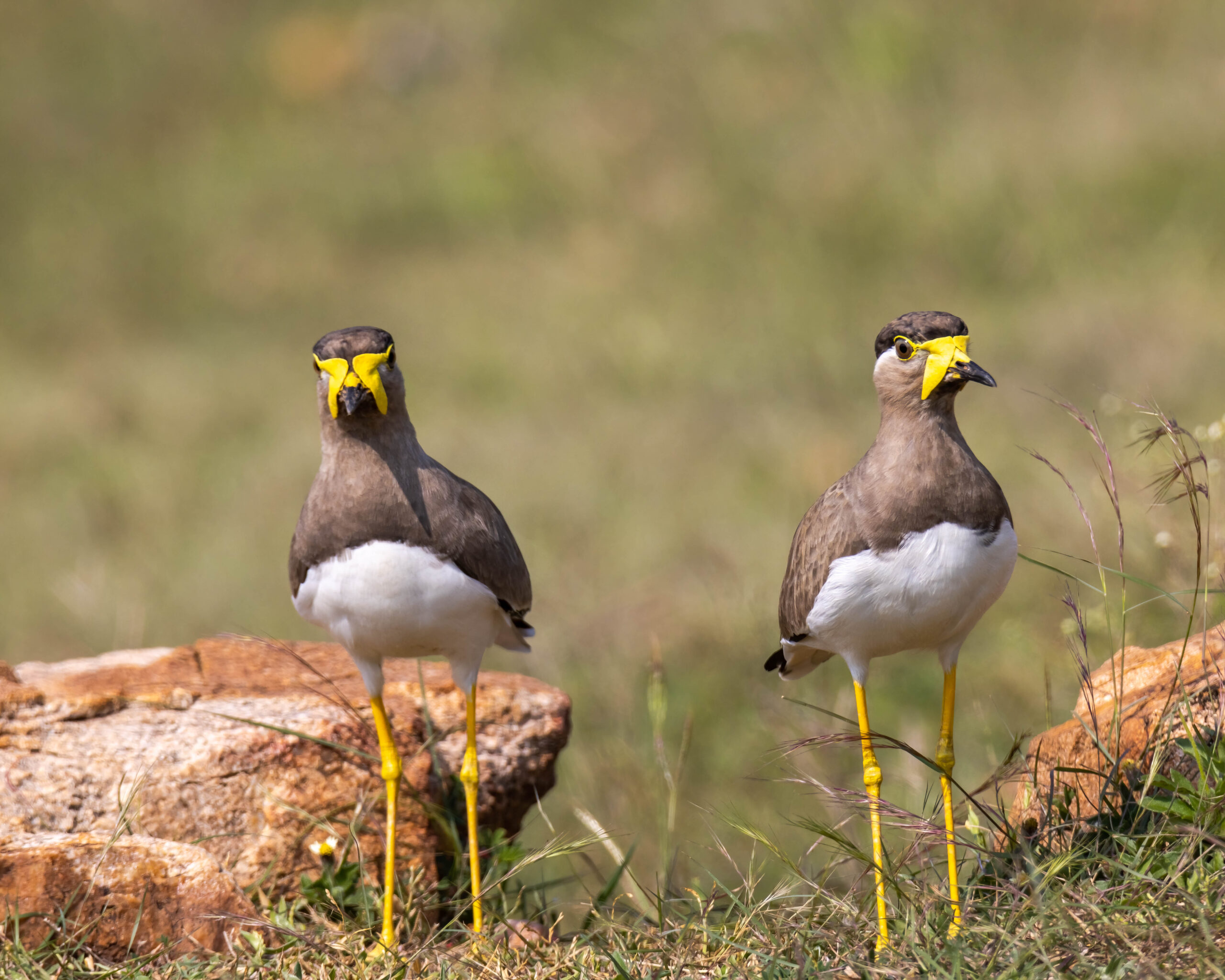Lapwings are ground nesting birds of plover family. They normally feed on insects, snails and other invertebrates mostly picked from the ground. There are 5 species of Lapwings found in Assam. Here is the list of the 5 Lapwings of Assam with picture.
Red-wattled Lapwing

Scientific Name: Vanellus indicus
Conservation Status: Least Concern (As per IUCN Red List)
Description:
The Red-wattled Lapwing is the most common lapwing of Assam. Like other lapwings, this is also a ground nesting bird which cannot perch on a branch. It nests on the ground near waterbodies and lays 3-4 camouflaged eggs. The adults protect the eggs from potential predators by flying around the nest. This bird is very much vocal and it becomes noisier when any human being or other animal approaches its nest.
Distribution and habitat:
Red-wattled lapwing is an Asian bird which breeds in the entire Indian subcontinent. This bird is seen in almost all the wetlands of Assam.
River Lapwing

Scientific Name: Vanellus duvaucelii
Conservation Status: Near Threatened
Description:
With grey-white wings and a prominent black crest, this lapwing closely resembles with Spur-winged Lapwing of Africa. Due to human pressure on riverine ecosystem and construction of hydropower projects, the global population of River lapwing is anticipated to undergo a moderately rapid declination in the upcoming generations. Therefore, the IUCN has enlisted this species as Near Threatened in their Red list.
Distribution and habitat:
The name River Lapwing derives from its habit of dwelling and nesting in the rocky floodplains of rivers. The River lapwing is a resident breeder of Indian subcontinent and southeast Asia. This lapwing is found in the rocky riverbeds of Assam.
Northern Lapwing

Scientific Name: Vanellus vanellus
Conservation Status: Near Threatened
Description:
The Northern lapwing is a wader bird. The colour of the bird is black and white; but the back is tinted green. The male bird has a long crest and black crown while the female and young bird has shorter crest. Northern lapwing feeds on insects and other small invertebrates. It often forages in mixed flocks with other water birds.
Distribution and habitat:
The Northern lapwing is a migratory bird which winters in North Africa and northern India including Assam. Its habitat is natural wetlands. During winter season, this is a very commonly seen lapwing in the wetlands of Assam.
Due to rapid population declination of this bird, the IUCN has enlisted it as a Near Threatened species in their Red list.
Gray-headed Lapwing

Scientific Name: Vanellus cinereus
Conservation Status: Least Concern
Description:
As the name suggests, the Gray-headed Lapwing has a grey head and neck, brown back, white belly, black tail and a bright yellow bill with black tip. An adult bird is 34-37 cm long. Both the male and the female adults are of similar plumage. But the male is a little larger than the female bird.
This lapwing is usually seen in loose small flocks, sometimes in mixed flocks and with other lapwings. The primary diet of this bird are insects, worms and crustaceans.
Distribution and habitat:
Gray-headed Lapwing winters in southeast Asia from northeastern India to Cambodia. The normal habitats of the Gray-headed Lapwing are the cultivated fields, flooded agricultural lands and marshland edges.
Yellow-wattled Lapwing

Scientific Name: Vanellus malabaricus
Conservation Status: Least Concern
Description:
This bird is dark brown with black cap and triangular yellow wattle and yellow legs. It has elongated wings and white belly. Unlike the other lapwings, the Yellow-wattled Lapwing is not very much noisy bird.
Distribution and habitat:
The Yellow-wattled Lapwing is an endemic bird to the Indian subcontinent. This bird is normally found in the dry plains of peninsular India. It is known to make seasonal movements in response to rains. This is the rarest among all the lapwings of Assam. It is rarely found in Rani Reserve Forest and its surrounding areas during the summer season.
Conclusion:
Out of the 5 lapwings of Assam, two are considered as Near Threatened species by the International Union for Conservation of Nature (IUCN). Due to various reasons, their population is decreasing. Therefore, this is the high time to join hands in protecting these beautiful birds and their habitats for the better future of the ecosystem.
Also read BIRDS OF ASSAM
See the story HERE
See video HERE